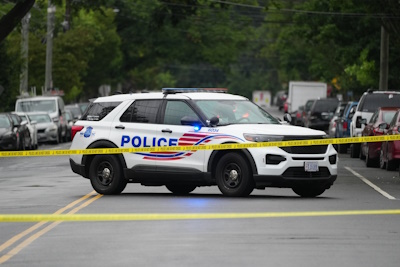While signing executive orders at the White House on Aug. 25, President Donald Trump wrongly said that an 11-day span of no homicides in Washington, D.C., was the “first time that’s taken place in years,” a claim reiterated by other members of the administration who credited Trump’s federal takeover of the district’s law enforcement.
An 11-day stretch with zero murders is rare in the city, but there was a 16-day period with no murders earlier this year, from Feb. 25 to March 12, according to Metropolitan Police Department data.

“In the last 11 days, we’ve had no murders and that’s the first time that’s taken place in years, actually years. We always have a murderer a week. They call it a murder a week,” Trump said as he prepared to sign executive orders aimed at ending no-cash-bail policies in Washington and other jurisdictions. He repeated it later: “So for 11 days there have been no murders. The record goes back years where that’s happened. They haven’t seen that happen in years.”
So far in 2025, there have been 103 homicides in Washington, an average of about three per week. In all of 2024, there were 187, down from 274 in 2023. As we’ve reported before, the city’s murder rate in 2023 — 39 per 100,000 population — was the highest in 20 years, but it was half the peak murder rate in 1991. And the rate has been declining since 2023.
Stephen Miller, the White House deputy chief of staff for policy, repeated the claim at the same event, saying: “We’ve checked the records. No one can even find a record of being murder free for as long as we’ve been murder free under President Trump’s leadership.” Vice President JD Vance credited the president “and the team” with saving “six or seven lives.”
There were no reported homicides in the city on Aug. 25, bringing the no-homicide streak to 12 days, dating back to Aug. 14. That information is available through the Metropolitan Police Department’s “crime cards” website, which provides preliminary crime data based on when crimes are reported to police. An early-morning homicide on Aug. 26, as reported by local news, ended the streak.
Trump had announced a federal takeover of the city’s police force on Aug. 11, along with the deployment of National Guard troops and a surge of federal law enforcement officers in the city to combat what he called a “crime emergency” in the district. (As we wrote at the time, there was an increase in crime in Washington in 2023, but the U.S. Attorney’s Office for the District of Columbia reported in January that violent crime overall for 2024 was down 35% from the previous year and was “the lowest it has been in over 30 years.” The administration has accused the police department of reporting “phony crime stats” and is investigating the matter, as we’ve also explained.)
There were two reported homicides on Aug. 11 and one more reported on Aug. 13, but the 12-day period with zero homicides began the following day.
As we said, such 12-day periods aren’t common in the city, but it hasn’t been “the first time that’s taken place in years,” as Trump said. It’s been about six months, when the city went 16 days without a homicide in late February and early March.
In 2024, the longest period without a homicide that we could find was 11 days, from Jan. 5 to Jan. 15.
We asked the White House whether the president was using a different crime dataset to make his claim. Spokeswoman Taylor Rogers responded: “Here are the facts: Violent crime has been plaguing the streets of Washington, DC for years – in just two weeks, President Trump’s bold action has stopped the senseless killings, removed over one thousand violent criminals from the streets, and overall crime has decreased.”
The MPD crime cards website does show a drop in violent and property crimes from Aug. 11, the date of Trump’s announced law enforcement takeover, to Aug. 26, compared with the same time period last year, or even a similar time period just prior to Aug. 11, with most of the violent crime reductions in robberies.
But Jeff Asher, a co-founder of AH Datalytics, a data consulting firm that produces an aggregation of crime data, cautioned that it was too early to analyze very recent crime data and to try to tease out whether the federal government’s actions have had an impact.
The crime data is “very preliminary,” and it could take weeks or up to two months for all the reporting to occur, he told us. There is some “underreporting of data,” he said, “when using a raw dataset like this.”
The crime trends in the city were also “already going down,” so measuring two points on a downward slope will show a decline. According to the preliminary data, there were 32 fewer violent crimes reported from Aug. 11 to Aug. 26, compared with the prior 16-day period, a drop of 28%. The decline was 48% compared with the same time period in 2024.
But as Asher noted, violent crime in the city had dropped 34% for the two weeks ending June 29, compared with the two weeks prior, and was 51% lower than the same period in 2024. “No intervention or anything, just randomness disguised as meaning,” he said.
That doesn’t mean the federal intervention in Washington hasn’t or won’t have an impact, but more time is needed to determine that, Asher said. “It’s challenging to see the effect of an intervention even months down the line. Doing it while it’s occurring … is not strongly advised.”
Editor’s note: FactCheck.org does not accept advertising. We rely on grants and individual donations from people like you. Please consider a donation. Credit card donations may be made through our “Donate” page. If you prefer to give by check, send to: FactCheck.org, Annenberg Public Policy Center, P.O. Box 58100, Philadelphia, PA 19102.